
Contemplating Purchasing
Akiya and Turning It into a Hotel?
Uncover the Legal Considerations
for Change of Use
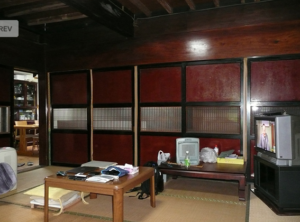
If you’re mulling over the idea of buying an Akiya (unused house) in Japan
and converting it into a hotel, it’s crucial to familiarize yourself
with the legal considerations involved in modifying the property’s purpose.
In this blog post, we’ll highlight the primary aspects you need to
keep in mind before diving into this thrilling endeavor.
Stay up-to-date and optimize your investment by following our business
blog for more news and valuable insights.
First and foremost, if you’re planning to start a hotel business in Japan,
you must obtain a hotel license from the government.
While the process of acquiring a hotel license can be quite complex,
in this article, we will primarily focus on the construction law aspects
of getting your property licensed.
Even if the current business has a hotel permit,
a new one must be obtained when the operator changes.
Previously, business permits were granted solely by the health center’s discretion,
but now, they are subject to inquiries from the architectural review department and the fire department,
ensuring compliance with building and fire codes.
In other words, permits were previously granted to illegal buildings, but not anymore.
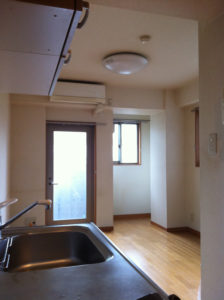
If the change of use involves an area exceeding 200 square meters, a confirmation application,
similar to new construction, is required.
In older buildings, it is common for the confirmation application to
be submitted but not followed by a completion inspection.
The completion inspection results in the issuance of
a “construction completion inspection certificate,” also known as “Kensa-zumi.” (検済み)
Without this, changing the building’s use becomes difficult.
If you are unsure whether a completion inspection has been done,
you can request a “ledger entry certificate” from your local municipal building department
or inquire about the completion inspection status.
![]()
There are precautions to be taken when changing the building’s use
with a completed inspection certificate.
Changing the Use of Detached Houses and Apartment Buildings:
Until now, hotel use on the third floor required fire-resistant construction.
However, with the revision and enforcement of the Building Standards Act in June 2019,
it became possible for semi-fire-resistant buildings as well.
This opened up the possibility for many three-story wooden houses to change their use to inns.
Apartment buildings can be built in educational districts, but accommodation facilities cannot.
The same applies to residential-only areas. (zoning)
Although the floor area ratio for shared spaces in apartment buildings is relaxed,
it does not apply to accommodation facilities, which can result in an increased floor area ratio
and prevent changes in use due to exceeding the limit.
Under current regulations, the floor area of elevator shafts is relaxed,
so a combined floor area ratio check is necessary.
When changing a part of a building into an accommodation facility,
the entire building becomes a mixed-use facility under
the Fire Service Act if the floor area exceeds 10% or 300 square meters.
This may require the installation of fire protection equipment,
such as automatic fire alarms, in areas not subject to the change of use.
Stair dimensions vary depending on the building’s use.
Detached houses and row houses have the most relaxed requirements,
while hotels have stricter ones. If the stairs do not meet hotel standards,
a confirmation application may be required when more than half of the stairs are altered.
For those considering changing the use of a detached house to special-purpose buildings
* such as accommodation facilities or child welfare facilities, please pay attention to the following points
and carry out necessary procedures and renovations:
(Otherwise, you can not obtain a hotel license and if you register such property on Airbnb, it is an illegal act)
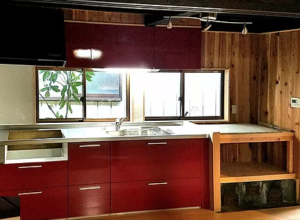
Due to the amendment of the Building Standards Act in 2018,
the process of obtaining building confirmation is no longer required
when changing the use of small-scale buildings
under 200 square meters to special-purpose buildings
*. However, even if the building confirmation process is not required,
compliance with the Building Standards Act and Fire Service Act is still necessary.
As different regulations apply to residential buildings and special-purpose buildings
*, depending on the situation, renovations to comply with the law may be necessary.
If you use a building that does not comply with the law, it may be treated
as an illegal building and subject to administrative guidance.
Please refer to the main newly applied regulations and renovation
examples on the back of this document,
and cooperate in efforts to prevent the occurrence of illegal buildings
by making necessary renovations as needed.
For more information, please consult an architect.
Special-purpose buildings
*: Buildings specified in Appendix 1 of the Building Standards Act
(such schools, hospitals, theaters, inns, hotels, dormitories, automobile repair shops, etc.).
Main applicable regulations :
Applicable regulations: Residential, Hotel, Inn, Simple Lodging, Group Home, Child Welfare Facility
Remarks
① Periodic reporting (Article 12 of the Act) – △ △ △ Designated by a specific administrative agency
② Fire-resistant buildings (Article 27 of the Act) – ○ ○ ○ Applies to buildings with 3 or more floors with such uses; relaxed regulations available
③ Septic tank (Article 32 of the Ordinance) n=5~10 n=P etc. n=0.07A n=P etc. n=number of people targeted for treatment P=capacity A=gross floor area (㎡)
④ Emergency lighting (Article 126-4 of the Ordinance) – ○ ○ ○ Relaxed regulations available
⑤ Staircase (Article 23 of the Ordinance) Riser height ≤23 cm, tread width ≥15 cm Riser height ≤22 cm, tread width ≥21 cm Same as above Same as above Unit: cm; relaxed regulations available
⑥ Fire protection compartments (Article 112 of the Ordinance) – ○ ○ ○ Applies to buildings with 3 or more floors; relaxed regulations available
⑦ Partition walls (Article 114 of the Ordinance) – ○ ○ ○ Relaxed regulations available
⑧ Zoning (Article 48 of the Act) – Some areas not allowed for location
Renovations required for legal compliance (Kawasaki city leaflet)
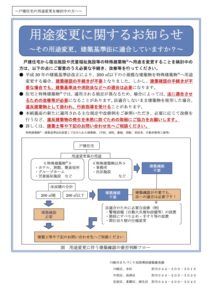
Here is the translation of the above leaflet.
Please note renovation requirements can be very different depending on your property.
You could have to renovate more items, or it could be less.
Septic tank: Alarm system WC Stairs Room E Room G Room F 3rd Floor Room H : Emergency lighting
④ Emergency lighting Installation in rooms, corridors, stairs, etc.
③ Septic tank Additional installation due to revision of the number of people targeted for treatment
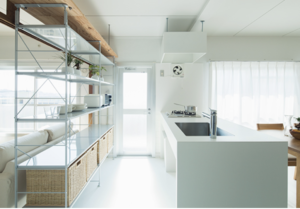
① Periodic reporting Regularly inspect the deterioration of buildings and
building equipment, and report to the specific administrative agency*
⑧ Zoning Accommodation facilities, restaurants, etc. are not allowed
in some areas WC Stairs Room A Room C Room B 2nd Floor Room D:
Partition walls Entrance WC Washroom Bathroom Hall Stairs Office LDK 1st Floor
⑦ Partition walls Installation of quasi-fire-resistant partition walls
between rooms and evacuation routes such as corridors, reaching the attic or ceiling
⑥ Fire protection compartments Installation of partition walls and doors (fire doors) in areas such as stairs
② Fire-resistant buildings, etc. Proper installation of fire alarm systems eliminates
the need for fire-resistant buildings
Specific administrative agency
*: The head of a municipality with a building supervisor** or a prefectural governor.
They handle licensing and approval based on the Building Standards Act. Building supervisor
**: A public servant placed in a local public organization to handle building confirmation,
intermediate inspection, and completion inspection based on the Building Standards Act.
⑤ Stairs Slip prevention, handrails
While the provided information has been completely translated,
here are some general tips to consider when converting a residential building
into a special-purpose building:
Consult with experts: Before starting any renovation, consult with architects, engineers,
or other professionals to ensure that the building will meet all legal requirements
and safety standards for its new purpose.
Plan for necessary upgrades: Depending on the intended use of the building,
upgrades such as improved fire safety, emergency lighting,
or accessibility features may be required.
Ensure that these upgrades are included in your renovation plans.
Obtain necessary permits and approvals:
Depending on your location and the type of special-purpose building,
you may need to obtain permits or approvals from local authorities.
Be sure to research and complete any required paperwork before starting renovations.
Monitor progress and ensure compliance:
During the renovation process, regularly check in with your contractor and
other professionals to ensure that the work is being done according
to plan and complies with all relevant regulations.
Prepare for regular inspections and reporting:
Once the building is in use as a special-purpose facility, be prepared for periodic inspections
and reporting to ensure ongoing compliance with regulations and safety standards.
By following these tips and the information provided in the original document,
you can help ensure a smooth transition from a residential building
to a special-purpose building that meets all legal and safety requirements.

Toshihiko Yamamoto
Real estate investing consultant and author.
Founder of Yamamoto Property Advisory in Tokyo.
International property Investment consultant and licensed
real estate broker (Japan).
He serves the foreign companies and individuals to buy and sell
the real estates in Japan as well as own homes.
He holds a Bachelor’s degree in Economics from
Osaka Prefecture University in Japan
and an MBA from Bond University in Australia
Toshihiko’s book, “The Savvy Foreign Investor’s Guide to Japanese Properties: How to Expertly Buy, Manage and Sell Real Estate in Japan” is now out on Amazon, iBooks (iTunes, Apple) and Google Play.
About the book
Amazon.com Link

